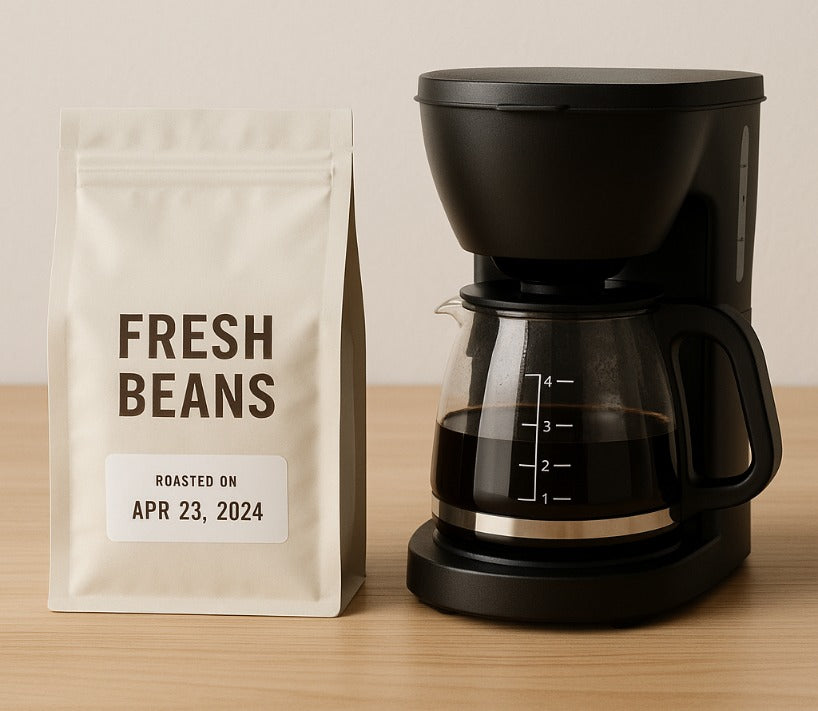How to Train Your Taste Buds for Subtle Top Coffee Flavors (and Actually Know What You’re Tasting)
December 13, 2024 3 min read
How to Train Your Taste Buds for Subtle Coffee Flavors (and Actually Know What You’re Tasting)
Have you ever taken a sip of coffee and thought, “Huh, it’s…coffee-ish?” Meanwhile, your friend claims to taste hints of “toasted pecan,” “blueberry,” or “a whisper of gentle moonlight.” Before you assume they’re just making it up, let’s get one thing straight: appreciating subtle coffee flavors is a real skill. It’s not reserved for coffee snobs or people who can sniff out a truffle in a haystack. With a bit of practice (and a playful sense of adventure), you can develop a palate that detects nuanced notes lurking in your morning cup. Ready to up your coffee game and discover the best tasting craft coffee at home? Let’s get brewing!
-
Start with Quality Beans, Brewed Mindfully:
To appreciate subtle flavors, you’ve got to start with good beans. If you’re brewing the same bargain-basement blend from who-knows-where, subtle flavors might be as elusive as Bigfoot. Consider exploring options like the best coffee bean delivery services. Such services often provide freshly roasted beans brimming with complexity, making it easier to detect those hidden flavor gems. When you brew, slow down and focus—no chugging allowed! Savor the aroma, take a sip, and let it coat your tongue before swallowing. -
Expand Your Flavor Vocabulary:
You know what chocolate, berry, and citrus taste like—so use those flavor anchors to describe what’s happening in your cup. If you’re enjoying a top coffee delivered fresh to your home, you’ll likely find notes that remind you of everyday foods. Is there a nutty finish? A bright acidity that feels like biting into a green apple? Identifying even one familiar flavor can open the door to appreciating many more. -
Practice Makes Palates Perfect:
Much like learning a new language, recognizing subtle coffee flavors takes repetition and patience. Try sampling the best tasting craft coffee online, and experiment with different origins, roast levels, and processing methods. It’s like speed dating for your taste buds—eventually, something will click! Pay attention to brew methods too; a pour-over might tease out delicate florals, while a French press can highlight earthier tones. -
Compare and Contrast:
Set up a mini “coffee flight” at home by brewing multiple coffees side-by-side. Use beans from different regions or try that top coffee sourced from a micro-lot farm. By tasting them together, you’ll more easily spot the differences: one might be bright and fruity, another rich and chocolatey. This approach helps sharpen your senses and locks in those flavor profiles, especially if you order coffee online regularly and rotate through new beans. -
Keep Notes, Stay Curious:
Treat your palate like a detective’s toolkit. Jot down the flavors you notice when trying something new—like the best coffee delivered right to your door. Over time, these notes will help you recognize patterns and build confidence. Even if your first few attempts yield “tastes kinda like coffee,” that’s okay. With patience, you’ll graduate to descriptors like “cacao nibs,” “black tea,” or “caramelized apple.” Get ready to impress your friends at your next brunch.
By slowing down, savoring, and continuously experimenting, you’ll soon move beyond the one-dimensional “it’s coffee” stage. Instead, you’ll discover that each cup—especially when sourced from top-notch beans—tells a delicious story. With the right approach, you can transform your morning ritual into a guided tasting tour of global coffee terroirs. And who knows? The next time your friend claims their brew tastes like “pomegranate with a hint of hazelnut,” you just might nod in agreement instead of rolling your eyes. Cheers to a more enlightened, flavor-packed coffee experience!
Also in Best Coffee To Buy Online Education

Brewing The Best Coffee at Home: Stop Waiting in Line
November 03, 2025 4 min read
Learn Brewing The Best Coffee at Home with a quick Proof → Promise → Plan system: choose fresh, roast-dated beans, use a simple 1:16 recipe at 200°F, and lock a 4–6 minute routine that beats the drive-thru on taste, time, and cost.

Best Tasting Coffee At Home: Stop Buying “Deals,” Start Buying Value
November 02, 2025 4 min read
Want the Best Tasting Coffee At Home? Skip old ‘deal’ beans. Use fresh, high-scoring, air-roasted coffee and a simple 1:16 plan. This guide shows proof, a clear promise, and a step-by-step plan to order smart, brew better, and enjoy sweeter, cleaner cups—daily.

Best Coffee To Make At Home: Fresh Beans, Simple Plan
October 31, 2025 4 min read
Learn the Best Coffee To Make At Home with a tiny, repeatable system: pick fresh, high-scoring, roast-to-order beans; brew at a simple 1:16 ratio; fix cups with one change at a time. Includes a comparison table, freshness rules, and beginner-friendly FAQs.
